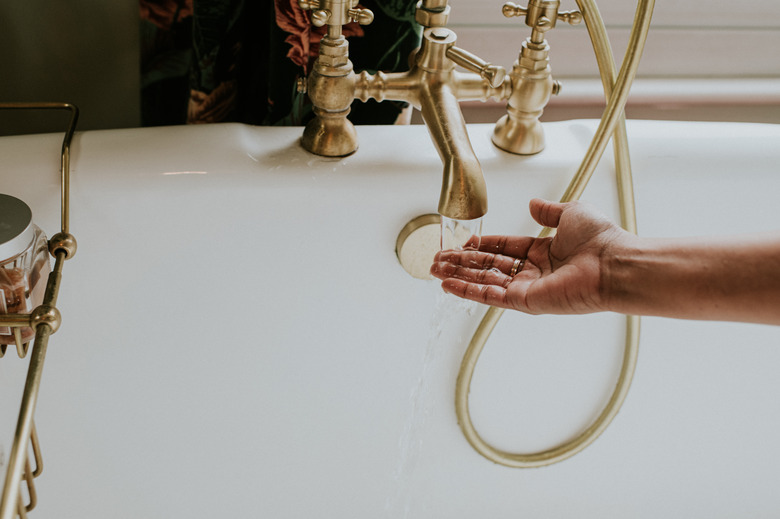What Kind Of Paint Will Hold On A Porcelain Bathtub?
Not just any paint will work on a porcelain bathtub. The slick surface makes it difficult for paints to adhere, and the high-moisture environment will damage many types of paints. Fortunately, there are a number of companies selling enamel paint kits specially designed for tub and tile that adhere well to porcelain and aren't harmed in the least by exposure to water. That being said, in order for these paints to work properly, they must be properly applied to the tub.
Clean the Tub
Remember that any soap scum, grease, or other residue can result in the enamel failing to properly adhere to the tub, so a proper cleaning is an essential first step. Start by removing the caulk with a caulk remover tool or razor blade and removing any bathtub hardware. Open a window to allow for improved ventilation and then scrub the tub until it is spotless, first with a mix of 1 part bleach to 9 parts water and then with an abrasive cleaner, like Comet, and finally with acetone to remove any remaining residues.
Prepare the Tub Surface
If you have any chips or scratches, use a tub repair kit or epoxy putty to fill them. Sand the repairs until even with a 400-grit sandpaper. Then, go over the entire tub with 400-grit sandpaper. This will create a rougher surface to which the paint can better adhere. Tape off the surrounding areas, such as shower tiles, walls, and faucets, with painter's tape. Fully clean the tub again and allow it to dry completely.
While not necessary, you can use a tub primer, such as Tub Cast, to help improve adhesion. This may also help reduce the number of coats of paint you will need if you plan to go from a darker color to a lighter shade, which is a helpful addition if you're turning an avocado-green tub white, for example.
Mix the Epoxy
Most bathtub repair kits use a two-part epoxy. This means you'll need to combine the two components in the larger can. Epoxy contains many caustic chemicals, so put on a respirator before opening the containers. It is critical that you mix the products according to the manufacturer's instructions, usually for a minimum of two minutes in order to obtain the proper thick consistency necessary for ready-to-use epoxy paint. Pour half of the mixture into a glass or metal container with a tight-fitting lid so it can be used for the second coat.
Paint the Tub
Use a paint roller or brush to apply the epoxy paint starting from the top of a far bathtub corner and then across and down. Apply a thin, even coat and use your brush or roller to wipe away any drips. Don't worry about brush marks, as epoxy is largely self-leveling.
Allow the first coat to dry as long as is recommended by the manufacturer, usually an hour, and then apply a second coat. If a third coat is required, occasionally because the original color was so dark, a second kit will be necessary, and you must wait 24 hours for the first two coats to dry before applying the third.
Finish and Allow the Tub to Dry
Do not recaulk or reinstall the hardware until the paint has fully cured according to the manufacturer's instructions, which will typically take up to three full days. When the paint cures, apply new caulk and reinstall the hardware. Wait to use the tub until the caulk has fully cured according to the manufacturer instructions, typically about 24 hours. Avoid using abrasive cleaners on the tub and the paint should last for somewhere between three and five years.
